Welcome to the exciting world of photography, where the possibilities are as limitless as your imagination! If you’ve landed here, chances are you’re ready to take the plunge into the deep, beautiful ocean that is DSLR photography. But before you go splurging on that high-end model you saw in a YouTube review, hold your horses! Choosing your first DSLR is a big decision, and it’s crucial to pick one that aligns with your needs, skills, and budget.
You see, a DSLR isn’t just another camera; it’s an investment in your creative journey. But, selecting the right one can feel like navigating through a labyrinth of sensor sizes, megapixels, and lens compatibility options—oh my! Feeling overwhelmed? Don’t worry; that’s why we’re here. This guide is designed to be your compass, steering you through the critical factors you need to consider before making that all-important purchase.
So whether you’re an aspiring travel blogger, an ambitious wildlife photographer, or someone who just wants to capture life’s beautiful moments in stunning detail, stick around. We’ve got everything you need to make an informed choice, minus the jargon and tech overwhelm.
Ready to leap from point-and-shoot to DSLR without tripping over terminology? Let’s dive in!
What is a DSLR Camera?
Digital Single-Lens Reflex: The Full Picture
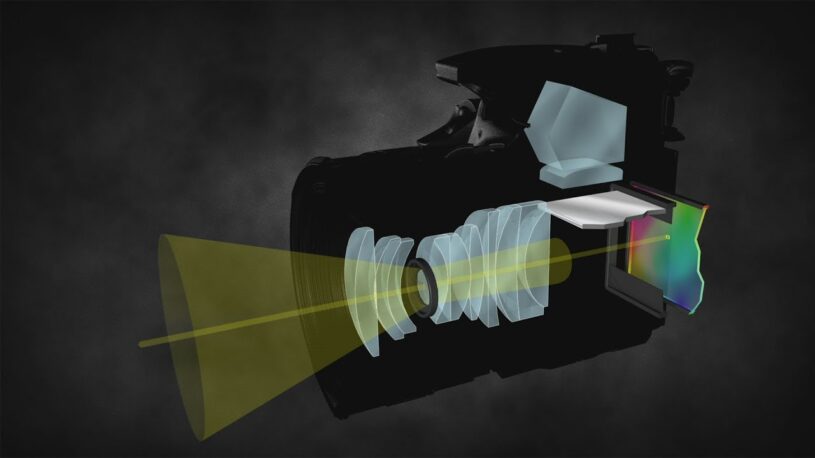
First things first, DSLR stands for “Digital Single-Lens Reflex.” Let’s break down this mouthful of a term. The “Digital” part is pretty self-explanatory—your images are stored electronically on a memory card.
The “Single-Lens” indicates that the camera uses the same lens for both framing your shot in the viewfinder and capturing the image. Finally, “Reflex” refers to the mirror mechanism that reflects light from the lens to the viewfinder, allowing you to see what you’re about to photograph.
How a DSLR Works: A Mini Crash Course
When you click the shutter button on a DSLR, a series of events unfold in mere milliseconds. The reflex mirror lifts out of the way, the shutter opens, and light hits the image sensor, capturing your photo. Think of it as a high-speed dance of mechanics and optics, choreographed to freeze a moment in time.
The Big Components: Body, Sensor, and Lenses
Body
The body is like the skeleton of your DSLR. It houses the sensor, mirror mechanism, and other internal components. It’s what you’ll be holding when you’re framing that perfect shot of a majestic sunset or a fast-paced soccer game.
Sensor
Think of the sensor as the “film” of your digital camera. The size and quality of the sensor play a significant role in the kind of images you can capture. You’ll often hear terms like “Full-frame” and “APS-C”—don’t worry, we’ll dissect these later in the guide.
Lenses
The lens is the eye of your camera, gathering and focusing light onto the sensor. The beauty of a DSLR is that you can swap lenses to suit different types of photography, from wide-angle landscapes to detailed macro shots.
Why Choose a DSLR?
The Art of Possibilities
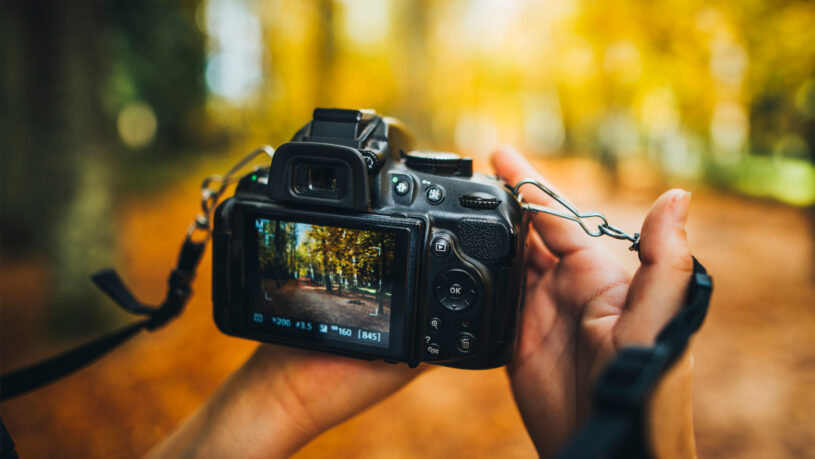
If you’ve ever been a part of photography circles or scrolled through photography forums online, you’ve probably heard terms like “mirrorless” and “point-and-shoot.” So why, in this age of photographic diversity, would you choose a DSLR? Simple: unmatched versatility and control.
Advantages of Using a DSLR
Quality Over Quantity
DSLR cameras offer superior image quality compared to most other types of cameras, thanks to their larger sensors and better optics. Think of this as ordering a gourmet burger instead of fast food—both will fill you up, but one is a feast for the senses.
Versatility is the Name of the Game
One of the most alluring features of DSLRs is their adaptability. You can change lenses for various photography styles, add external flashes, or even hook up a microphone for better video quality. It’s like owning a Swiss Army knife, but for capturing memories.
Full Manual Control: Be the Captain of Your Ship
DSLRs offer extensive manual controls, letting you adjust settings like aperture, shutter speed, and ISO to your heart’s content. This freedom allows you to be incredibly creative and precise in capturing your vision, whether that’s a glowing cityscape or the intricate details of a dew-covered spider web.
Addressing the Elephant in the Room: DSLR Misconceptions

They’re Too Complicated!
DSLRs can be as easy or as complicated as you make them. Most models have user-friendly modes to help beginners get started, so you don’t need a Ph.D. in photography to use one.
They’re Too Bulky!
While it’s true that DSLRs are often larger than point-and-shoots or smartphones, many models are surprisingly compact and lightweight. Plus, sometimes you need to go big to capture something epic, right?
Factors to Consider When Choosing Your First DSLR
Budget: Your Financial Frame
First and foremost, set a budget for your camera purchase. While it’s tempting to go for the top-of-the-line model, remember that you may also need to invest in lenses, memory cards, and perhaps even editing software. A budget will help you narrow down your options without breaking the bank.
Sensor Size: Full-frame vs. APS-C vs. Micro Four Thirds
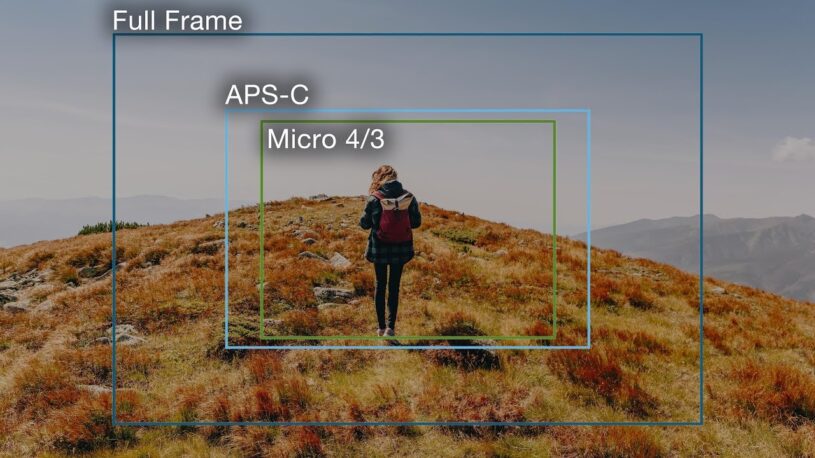
Full-frame
If you’re after the highest possible image quality and don’t mind shelling out some extra cash, full-frame sensors are the way to go. They offer better low-light performance and a broader dynamic range.
APS-C
APS-C sensors are a more budget-friendly option without a significant compromise on image quality. They’re great for general-purpose photography and even some professional work.
Micro Four Thirds
These are generally found in mirrorless cameras but are worth mentioning. They offer compact sizes and are great for video but may not perform as well in low-light conditions.
Types of Photography: What’s Your Focus?
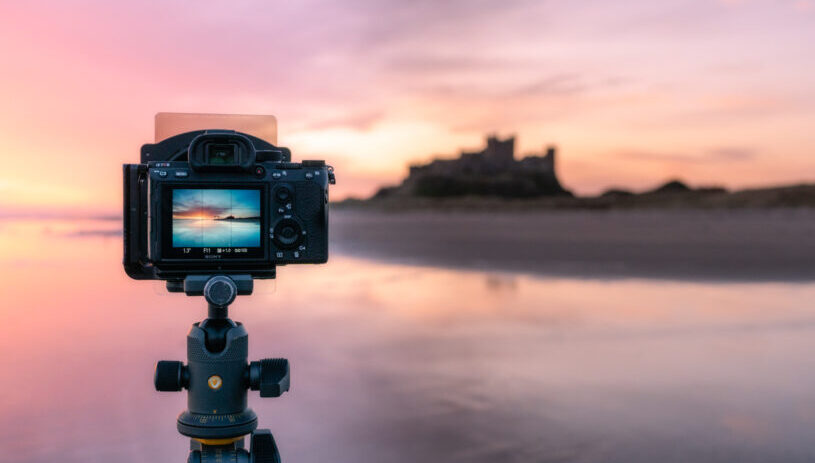
Landscape
For sweeping vistas, consider a camera with high resolution and a wide-angle lens.
Portraits
If capturing people is more your style, look for a camera that excels in skin tones and has a good selection of portrait lenses.
Action/Sports
Need to freeze motion in crystal clear detail? Prioritize fast autofocus and high burst rates. You can check out a comprehensive guide on the best Canon lenses for sports photography to elevate your action shots.
Macro
For those up-close-and-personal shots, a camera with a good macro lens and excellent image stabilization is crucial.
Lens Availability: Options for Your Vision

Different brands offer various lenses, from fisheye to telephoto. Make sure your chosen brand has a diverse lens lineup that can grow with you as you delve deeper into photography.
Additional Features: The Cherries on Top
Image Stabilization
This can be a lifesaver for handheld shots.
Wi-Fi/Bluetooth
For the social media aficionados, easy sharing can be a significant factor.
4K Video
If you’re interested in video, 4K is a new standard nowadays.
Top DSLR Picks for Beginners: 2023 Edition
Budget-Friendly: Canon EOS Rebel T8i
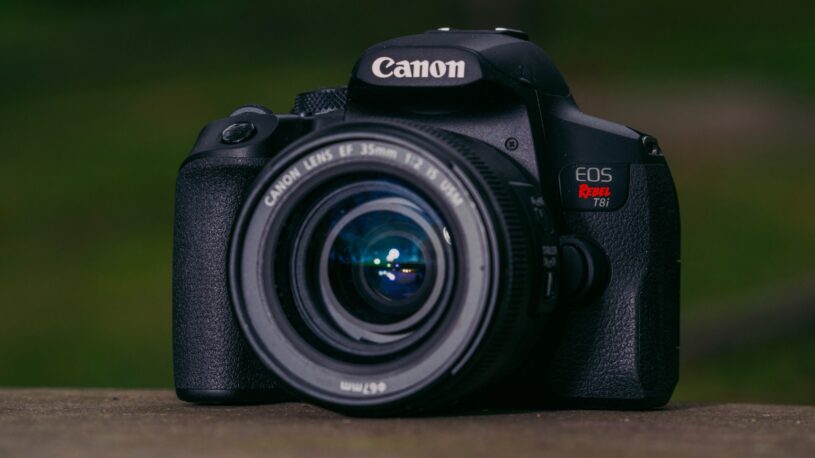
- Why It’s a Good Choice: This camera offers a balanced mix of ease-of-use and robust features, making it ideal for beginners. The APS-C sensor delivers excellent image quality without costing an arm and a leg.
- Key Features: 24.1 MP, 4K video, vari-angle touchscreen.
Best for Action Photography: Nikon D7500
- Why It’s a Good Choice: With its fast burst rate and advanced autofocus system, the D7500 ensures you won’t miss that crucial moment.
- Key Features: 20.9 MP, 8 fps burst shooting, weather-sealed body.
Best Full-Frame Option: Sony Alpha 7C
- Why It’s a Good Choice: If you’re ready to make the leap to a full-frame sensor, the Alpha 7C offers an excellent starting point without being overly complicated.
- Key Features: 24.2 MP, 4K video, compact body.
The All-Rounder: Pentax K-3 Mark III
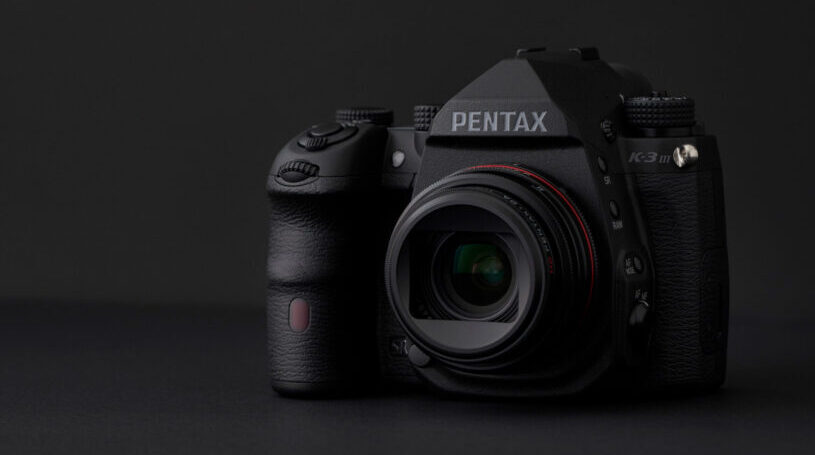
- Why It’s a Good Choice: A sturdy choice that’s great for those who don’t want to be tied down to a specific type of photography.
- Key Features: 25.7 MP, rugged construction, 5-axis image stabilization.
The Innovator: Fujifilm X-T4
- Why It’s a Good Choice: Ideal for those who value both form and function, the X-T4 offers unique film simulation modes and a vintage aesthetic.
- Key Features: 26.1 MP, 4K video, film simulation modes.
Remember, the best camera for you is the one that meets your specific needs and fits within your budget. Now that you’re equipped with the know-how and some top picks, you’re well on your way to capturing the world through your unique lens.
Conclusion: The World Through Your Lens
Choosing your first DSLR camera can feel overwhelming, akin to standing in front of a smorgasbord of delicious options. But remember, the goal isn’t just to get the most expensive dish on the menu; it’s to find the flavors that make your palate sing—or in this case, to find the camera that brings your creative vision to life.
By now, you should have a thorough understanding of:
- Why a DSLR could be the right fit for you: From image quality to versatility, there are compelling reasons to opt for a DSLR as your weapon of choice in the photography arena.
- Factors to Consider: Whether it’s sensor size, types of photography, or additional features, you’ve got the tools to navigate the world of DSLRs like a pro.
- Top Picks for 2023: Armed with options that cater to a range of budgets and needs, you’re all set to make your purchase.
Whether you’re looking to capture awe-inspiring landscapes, intimate portraits, or adrenaline-pumping action shots, the right DSLR camera can be your trusty sidekick on this artistic journey. So go ahead, take that leap, and start capturing the world as you see it—one frame at a time. Read our article and learn about long-exposure photography.
Happy shooting, and may your photos be as amazing as a perfectly timed golden hour sunset!
